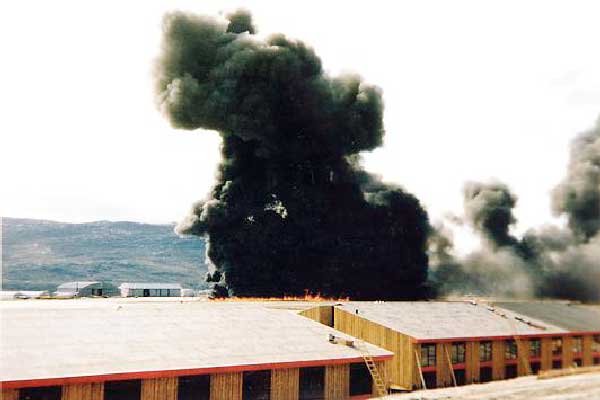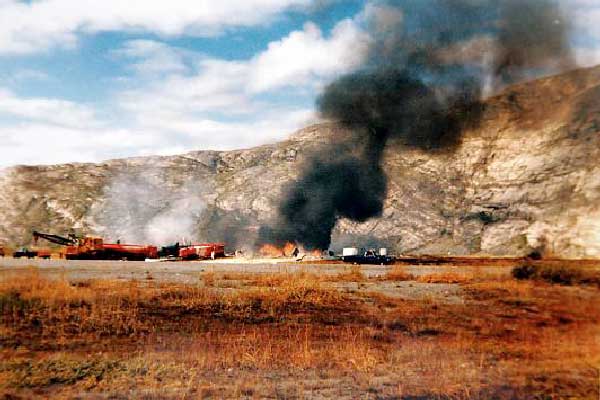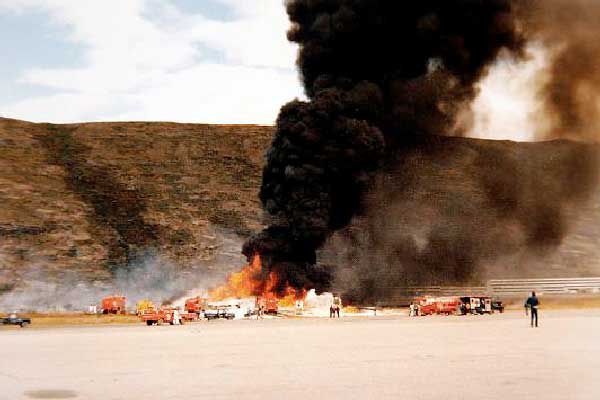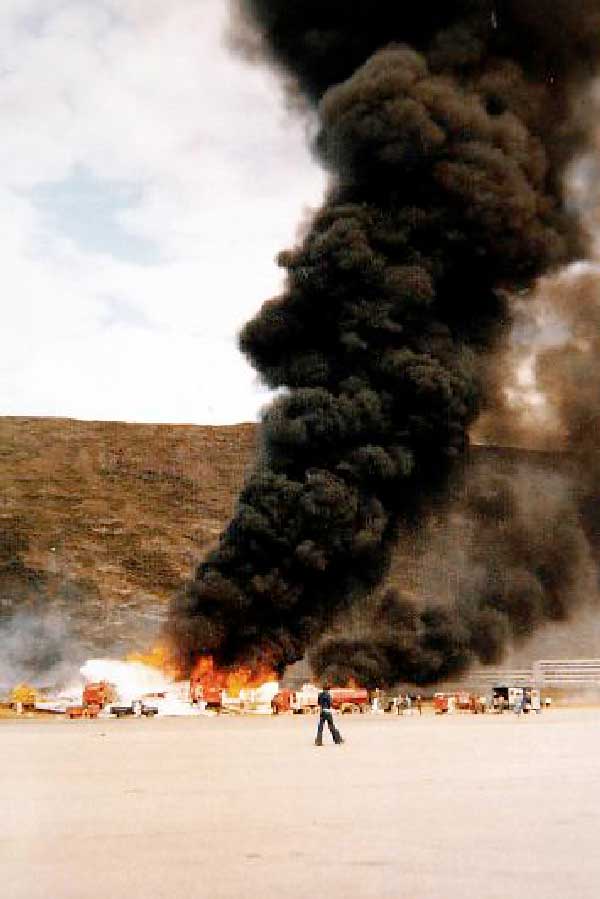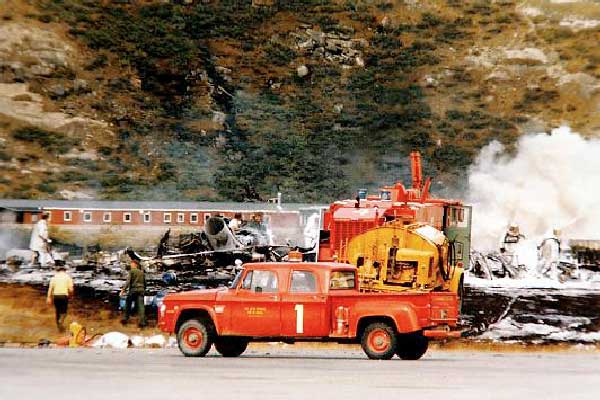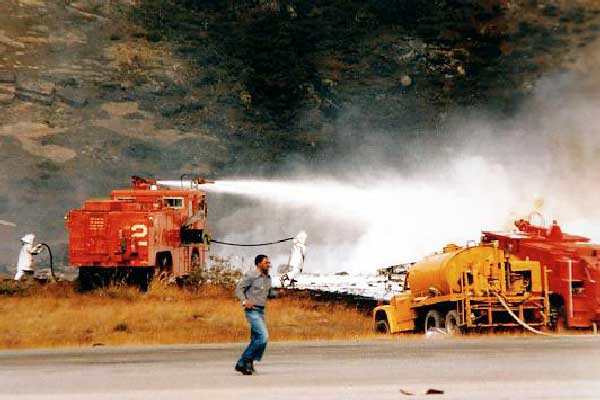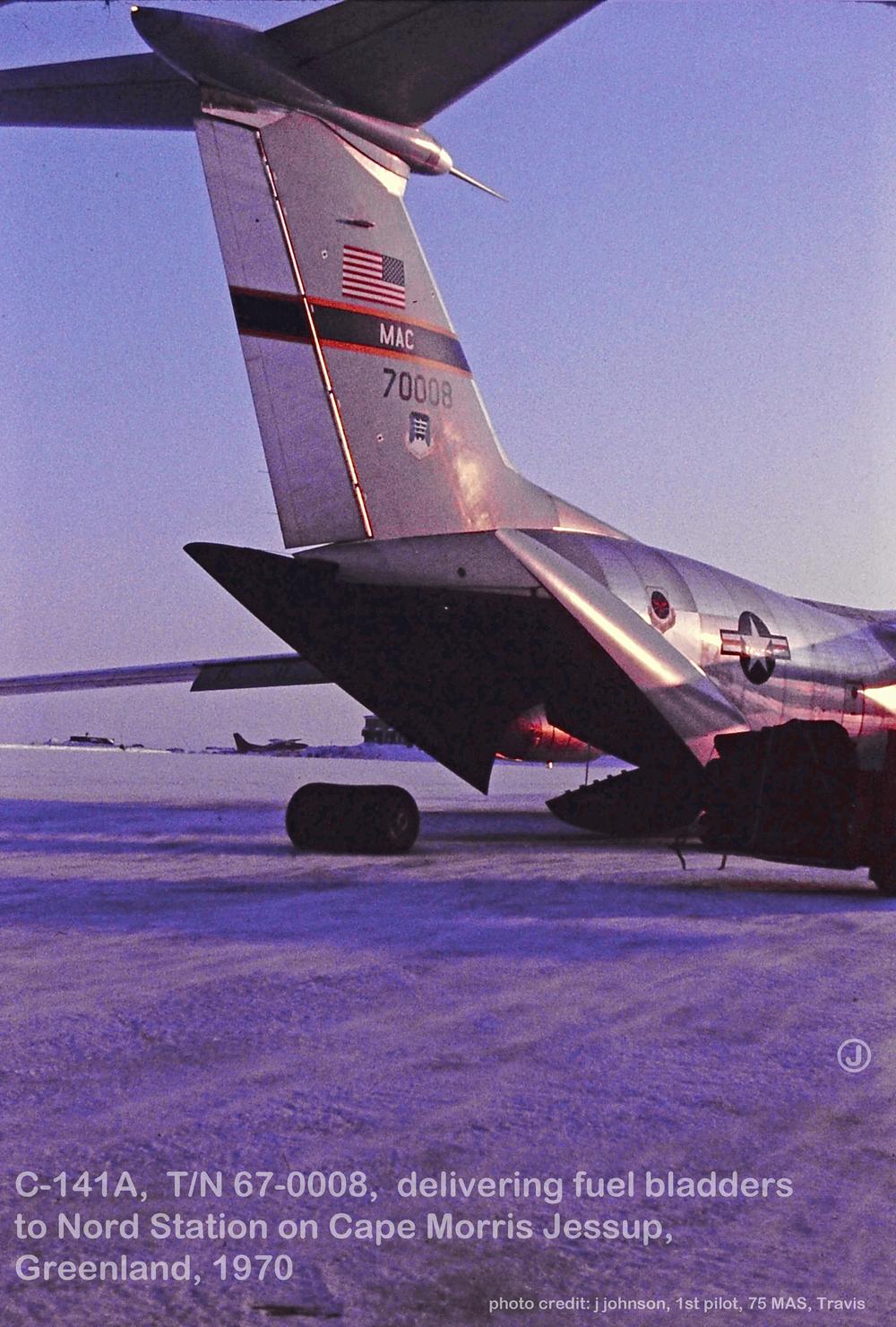
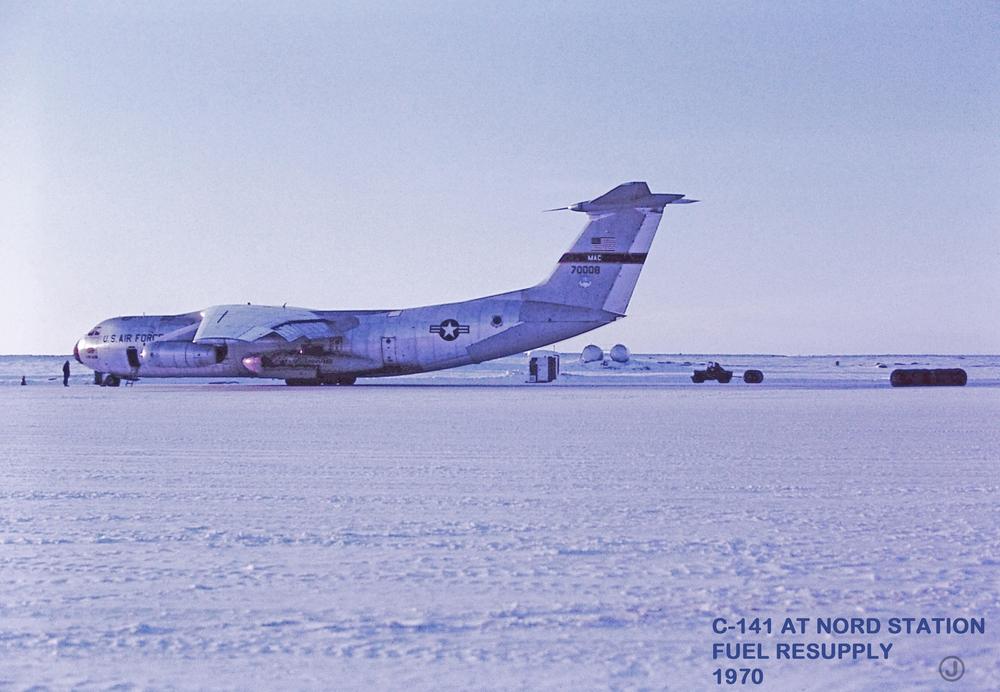
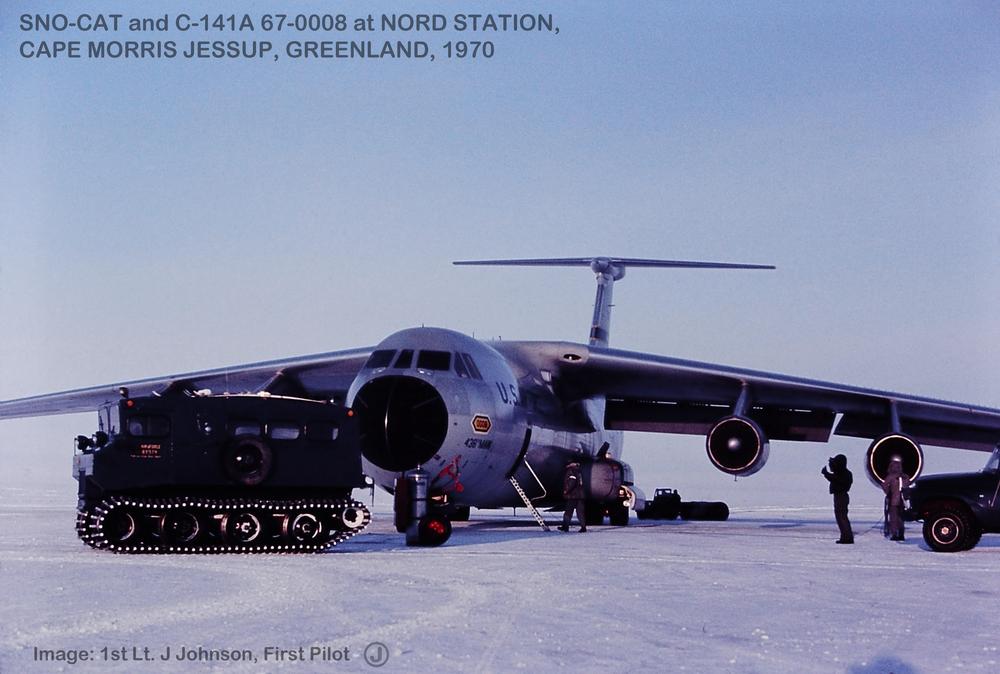
Copyright © 1970:James Johnson
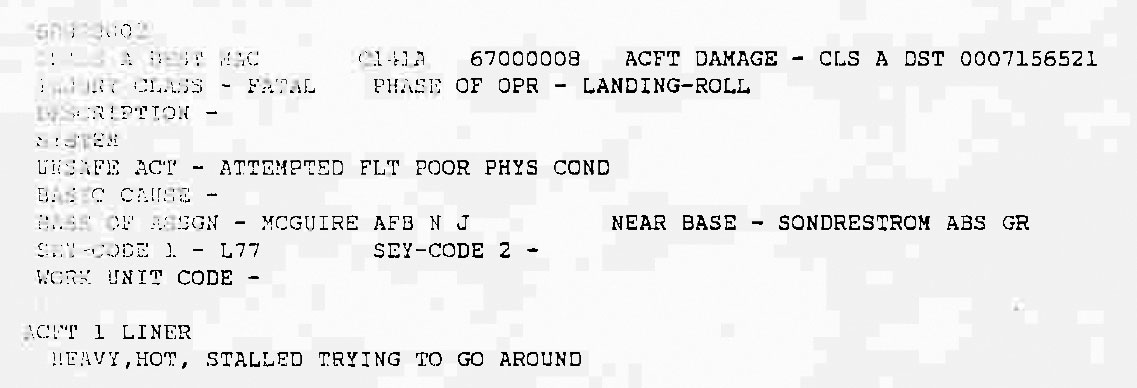
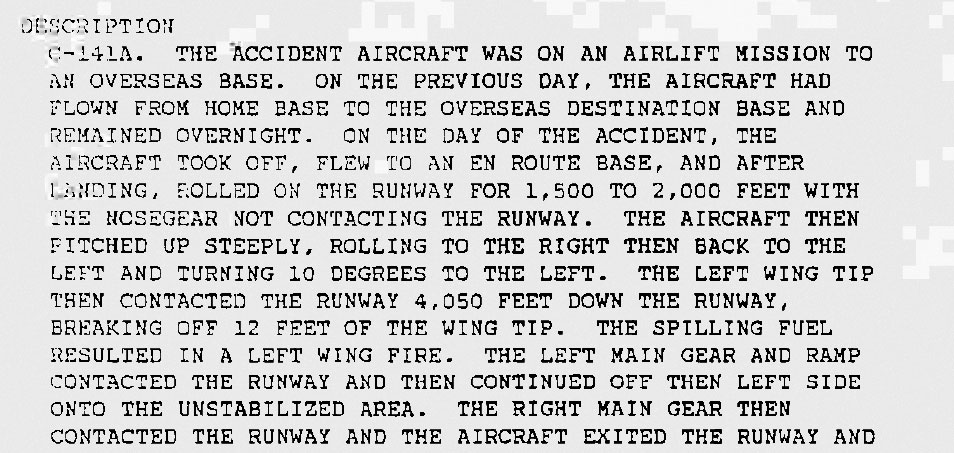
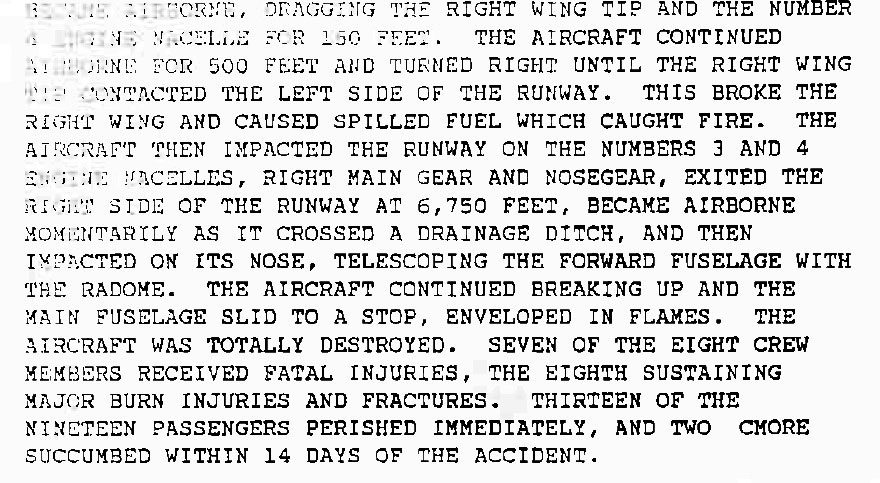
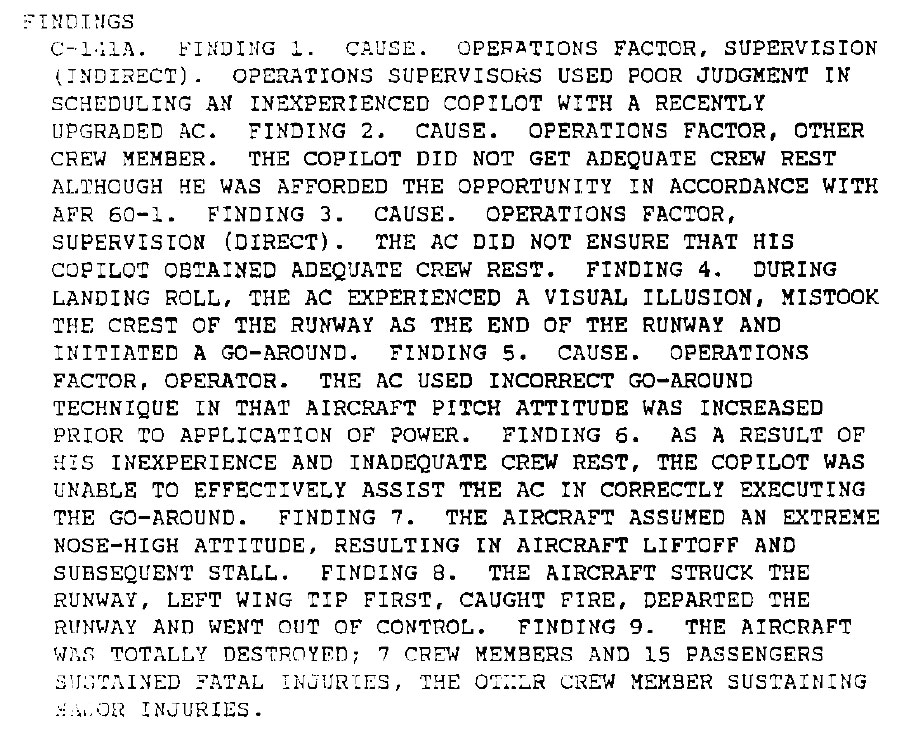
This aircraft crashed and was destroyed in an accident in Sondrestrom, Greenland
on 28 August, 1976. The accident investigation determined that a runway landing
illusion had contributed to this accident. The first third of the runway at
Sondrestrom has an up-slope, and during a normal landing, the rest of the runway
'disappears' over the horizon. This may have caused the pilot to think it was
either a very long landing, or a very short runway. As a result, after landing
the pilot evidently decided to go around for another try. During the liftoff the
plane over-rotated for unknown reasons, developed a nose-high attitude and
stalled. It crashed on the runway, killing 7 crew members, and 16 passengers. A
navigator and three passengers survived the crash.
I'm fairly sure these are AF photos the Sondrestrom runaway area following the
crash discussed above.
If you recognize them as somewhere else please
contact me via emailknow.
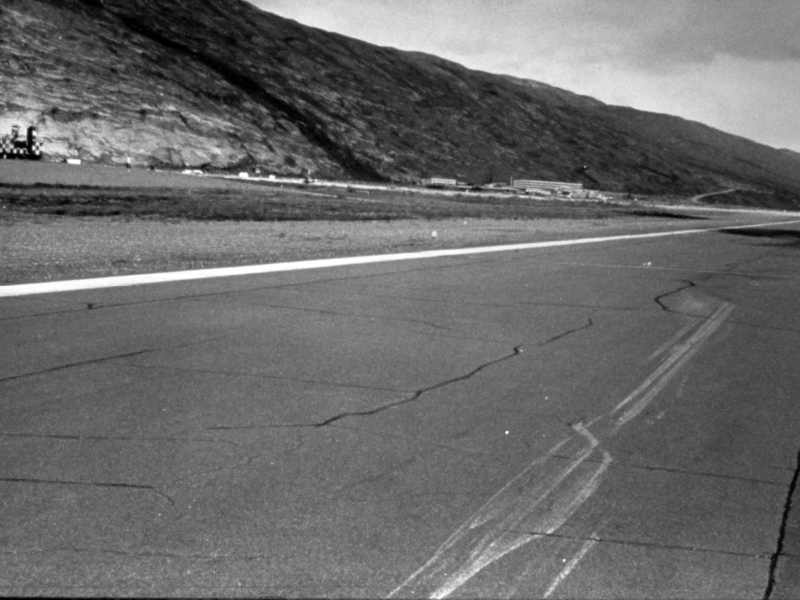
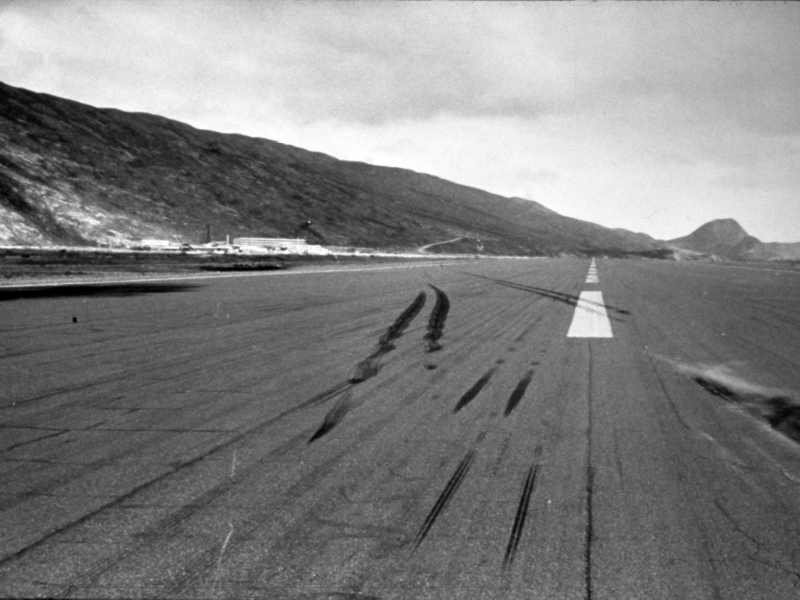
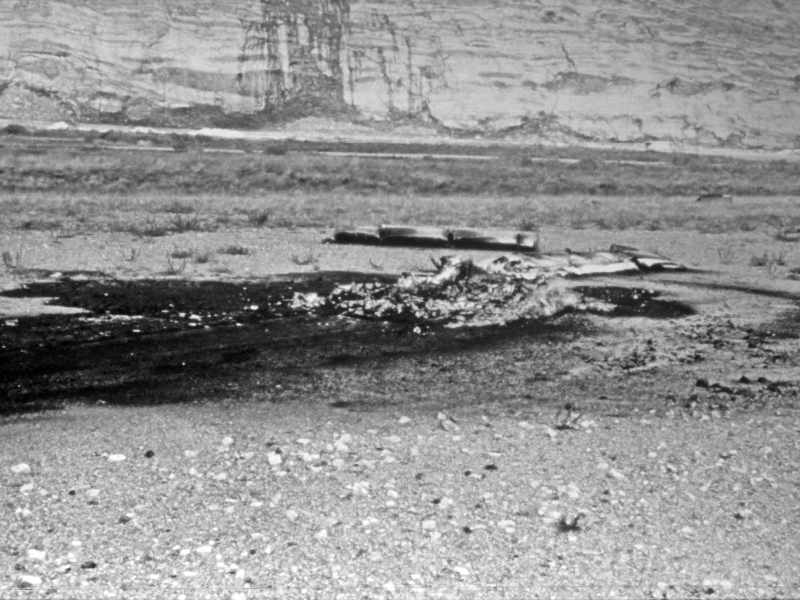
In February 2007, C141Heaven received the following note from Al Brewer, who was
involved with the investigation of the Sondrestrom accident.
C-141 Accident at Sondrestrom, August 1976
Note: This is my personal hypothesis which I think lends depth to the
official accident report. As my personal opinion it is offered in the spirit of
gaining a better understanding of why this accident occurred and in no way is
meant to contradict the official report or to cast aspersions at anyone involved.
At the time of this accident I was assigned to HQ MAC in the Aircrew
Standardization and Certification Division.
Background: As noted in the accident synopsis the pilot crew members were
relatively inexperienced. I do not recall if either had transited Sondrestrom at
any time previously. Sondrestrom is not the easiest airfield to operate through.
The approach is offset slightly from the runway heading requiring a slight turn
after Minimum Descent Altitude to line up with the runway, thus a more compressed
timeframe to get airspeed, attitude, configuration (landing flaps), and position
set to cross the threshold. As noted in the synopsis the first portion of the
runway including the touchdown zone slopes upward. At the normal touchdown spot a
C-141 pilot sits too low to see the end of the runway beyond the crest of the
slope.
Starting around the end of July 1976 the C-141 pilots assigned to HQ MAC Aircrew
Standardization and Evaluation were discussing a trend noticed on their travels
through the system.
Some pilots, recently trained in the T-38, were rounding out and holding the nose
higher than the normal touchdown attitude before touchdown; and were using
aerodynamic braking by holding the nose off for several seconds after touchdown
before employing the usual deceleration devices. Note that the Dash-1 specifies
that the landing performance data is based on a technique whereby the aircraft
touches down and the nose is lowered to the runway within two seconds with
spoilers employed when the main gear is on the runway and thrust reverse (TR)
started after the nose is down and TR fully applied within six seconds. Holding
the nose off invalidates the usual performance calculated by the engineers.
The pilot in control of the aircraft during this landing had a deficiency
notation in his training records pertaining to use of this technique.
At the time of this accident, the spoilers were to be operated in the autoland
position but without being armed. The copilot, upon touchdown and command by the
pilot, was to lift the spoiler control handle and follow the handle to the
deployed position with his hand. If the lever did not move after lifting, the
copilot was to move it to the deployed position.
Now with all of this in mind, I believe the approach by the accident aircraft was
probably normal with a normal touchdown spot possible. I believe the pilot
applied a nose high landing attitude and misjudged the payout point due to the
slope of the runway. Touching down before he expected it with back pressure to
hold the nose off, the aircraft bounced. The copilot lifted the spoiler handle,
the wheels spun up from the touchdown and the spoilers deployed. Fighting for
control and trying to salvage the landing by holding the nose off, the aircraft
stalled, a wing dipped, contacted the ground, and the pilot applied the
throttles. He fought a losing battle for several thousand feet with a damaged
wing, an aircraft that was behind the power curve, and only a few feet off the
ground.
I realize this conflicts in places with the synopsis presented especially with
respect to the spoilers. However, it can fully explain the accident. Furthermore,
the copilot could have retracted the spoilers during the struggle for recovery. I
do not recall any discussion of the aircraft rolling 1500 to 2000 feet then
rotating abruptly, rather I recall traveling over the runway 1500 to 2000 feet.
Observers, abeam the runway, but situated after the slope up levels out, may have
seen the aircraft as the pilot in control began holding the aircraft off but did
not see the mains on the runway bearing the weight of the aircraft. Touchdown,
wheel spin up, bounce, hold-it-off, spoiler deployment, pitch up, and attempted
recovery: unsuccessful. The Dash-1 cautions that spoiler deployment will cause
nose pitch up (no-flap landings) but holding backpressure on the elevators with
the nose high approximates the attitude of the no flap landing attitude and will
allow a pitch up. Thus the caution to lower the nose immediately after main gear
touchdown.
With or without the spoilers in the equation I believe the aerodynamic breaking
technique was the primary cause in this accident with supervisory contribution by
not having a better crew balance going into more challenging fields.
This reflects my recollection of what was discussed by the standardization troops
immediately after the accident and how the "aerodynamic braking" technique was
actually being worked in the summer of 1976. This issue was addressed with HQ MAC
Training and was a special emphasis flight examiner item for the next year. To my
knowledge, this technique was not noticed again.
Al Brewer
In December 2008 C141Heaven received the following note from Francis Tower:
I was the weather forecaster on duty 28 Aug, 1976 when both
67-0008 and
67-0006crashed.
We first got the call on 0008 and began our checklists for an aircraft
accident. As you can imagine, it got very busy and noisy. It seem like 45 minutes
later one of the flight controllers got a call regarding 0006. He shouted out to
the commander that he has a report of a C141 crash. The commander shouted back
"We already have the Greenland crash".
"Sir", he replied, this one is in England".
As the weather flight follower it was my job to keep the flight updated on
enroute weather. So close to England I wasn't able to contact the aircraft
through Mildenhall and update the weather forecast.
To this day I feel sorrow for all crew and passengers on both flights.
Concerning 0008, the speculation in the command post from the experienced C141
pilots was that flying into Sondrestrom and not having landed there before the
pilots view (because of the hump in the runway) was of the runway suddenly ending
at the base of the mountains. The crew could have panicked and started a go
around with insufficient air speed to clear the enclosing mountains.
Francis Tower
Capt, USAF Ret.
In March 2009, C141Heaven received the following note from Leon Larson, currently
living in Sondrestrom, Greenland.
I got these pics from
Tom Hansen in February of 2012. He was working at SAB greenland
for six years as civilian in the carpentershop.
He was very interested in airplanes and taking photographs.
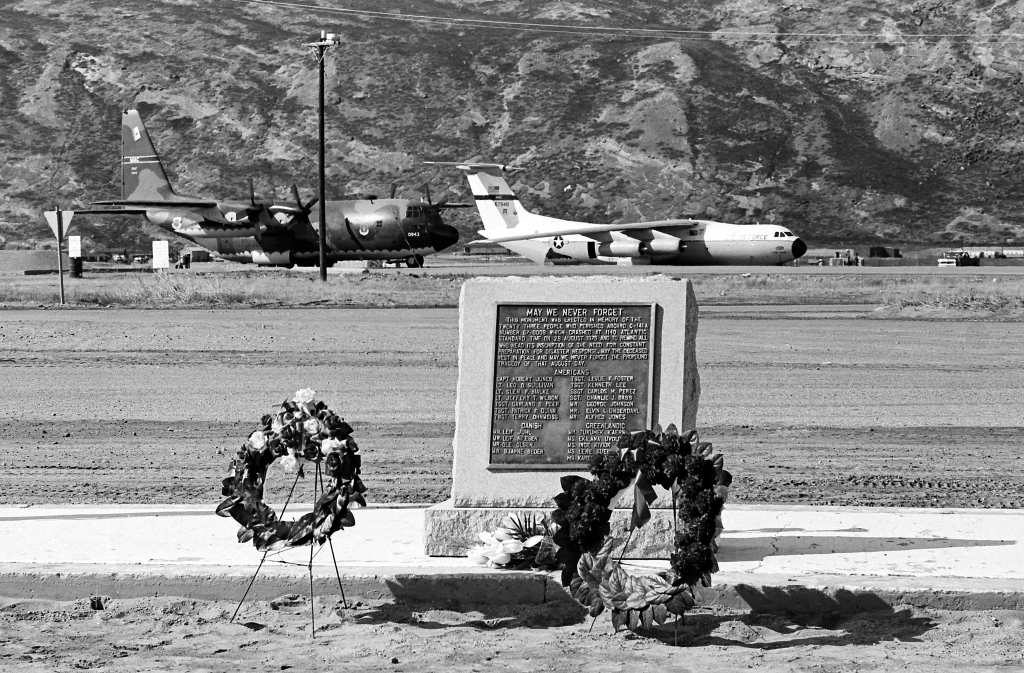
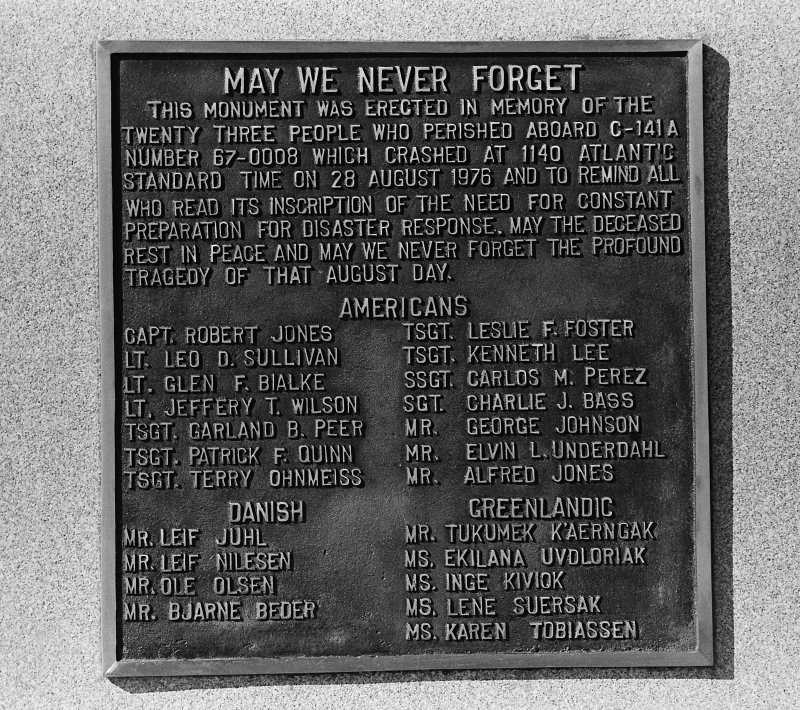
In a terrible coincidence, another C-141,
67-0006, crashed the on same day at Mildenhall, UK.











